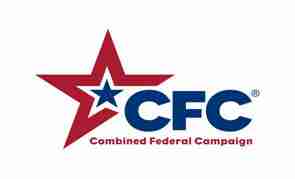Facts & Statistics
According to the TLC Foundation for Body-Focused Repetitive Behaviors, the term body-focused repetitive behavior (BFRB) represents a group of related disorders including hair pulling, skin picking, and nail-biting. Other body-focused repetitive behaviors include cheek and lip biting, nail picking, scab picking/eating, knuckle cracking, and tooth grinding.1
Common BFRBs
Trichotillomania
Trichotillomania is also known as hair pulling disorder and is characterized by the action of repeatedly pulling one's hair (including scalp hair, eyelashes, eyebrows, arm/leg hair, pubic hair, chest hair, and facial hair). According to research, 1-2 in 50 people experience trichotillomania in their lifetime and the average age that people begin pulling is around age 12. People with trichotillomania experience bald patches and hair loss due to the severity of hair pulling.2
Excoriation
Excoriation disorder is also known as skin picking disorder or dermatillomania. It's characterized by the repetitive picking of one's skin, including touching, rubbing, scratching, and digging into the skin. Picking can result in tissue damage, discoloration, and/or scarring. Research shows that 2-5% of the population picks their skin to the point of noticeable tissue damage, with 75% of those people being females.3
Onychophagia
Onychophagia is also known as nail biting and is characterized by the habitual biting of finger nails. Nail biting is a common behavior that begins in childhood and it is estimated that 20-30 percent of the general population engages in chronic nail biting which can be quite severe and result in permanent damage to the nail and skin.4
Treatment
Professional help from a mental health care provider who has been specifically trained to treat BFRB’s will probably make the difference between a helpful treatment and one that has little to no impact. It is necessary that the mental health care professional is well-versed in using behavioral science and behavioral interventions that target the function of the BFRB, identify the internal and external triggers for the behavior, and provide specific interventions to reduce the BFRB in identified environments. Other therapy models and techniques such as psychodynamic therapy, EMDR, and many others are not likely to help the BFRB, as they are not specific enough to the person’s unique manifestation of BFRB-related thoughts and behaviors.
Medication
There are currently no drugs approved by the Food and Drug Administration and there is limited research on the use of medication for BFRBs.
ADAA Resources
- Find-A-Therapist
- Understanding and Treating Body-Focused Repetitive Behaviors by ADAA member Suzanne Mouton-Odom, PhD
Helpful Publications
- The Hair Pulling Habit and You: How to Solve the Trichotillomania Puzzle, Golomb and Vavrichek, 2000
- A Parent Guide to Hair Pulling Disorder: Effective Parenting Strategies for Children with Trichotillomania, Mouton-Odum and Golomb, 2013
- The Hair Pulling Problem, Penzel, 2003
Additional Resources
- The TLC Foundation
- Find A Support Group
- Articles and Videos
- ChildMind Institute
- SkinPick
- StopPulling.com
- StopPicking.com
Trending Articles and Blog Posts
- The Truth About Trichotillomania, Happiful article
- Fighting the Shame of Skin Picking, New York Times, ADAA member Katharine A. Phillips, MD quoted
- What is Trichotillomania - ChildMind Institute
- Excoriation, or Skin Picking - ChildMind Institute
- Here’s When Hair-Pulling, Skin-Picking, or Nail-Biting Becomes a Disorder - Self.com article
- What Is Trichotillomania? When Hair Pulling Becomes a Serious Obsession - Child Mind Institute
- 8 Things You May Not Know About Body-Focused Repetitive Behaviors (BFRBs) - Mental Health America article
- 9 Tips for Managing a Body-Focused Repetitive Behavior From People Who Have Them - Self article
- How Mindfulness and CBT Work Together in Treatment for Body Focused Repetitive Behavior - Anxiety.org article
- Inside the Nightmarish Body Habit Disorders That Affect 'One in 50 People' - VICE article
- The Hidden Epidemic of Compulsive Hair Pulling - Quartz article
1. Learn About BFRBs, TLC
2. What is Trichotillomania (Hair Pulling Disorder)?, TLC
3. What is Excoriation (Skin Picking) Disorder?, TLC
4. Nail Biting (Onychophagia), TLC






